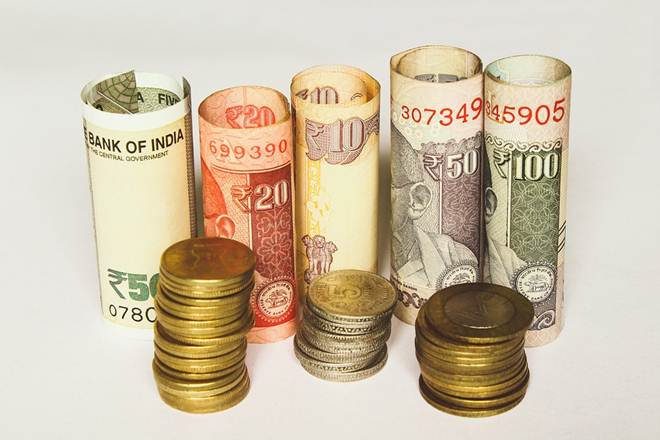After jumping sharply upto 76 levels against the USD, the Indian Rupee made an all-time-low on 9th May and extended its fall towards 77.62 on Friday as strength in the US dollar index dented demand for the riskier assets and currencies and as foreigners continued to withdraw their stocks and bonds. Throughout the week, RBI tried to control the currency from sliding but still closed lower by 50 paise for the week.
From the US, whether it is the job report (pre-pandemic low), inflation (40-year high), annual growth (37-year high), or core Personal Consumption Expenditure data (hit 31-year high in Feb), all are favoring a stronger US Dollar index.
Read More:-DR Hike: Select pensioners to get increased dearness allowance, check eligibility, arrear details
From the emerging market front, the faster US rate hike, huge FII outflow, higher commodity prices, and overshooting inflation has urged central bankers to go for a rate hike and compromise their growth. That apart, trade deficit and fiscal deficit are also widening month over month. Due to this, many EM currencies have depreciated over the last 1.5 months. The rupee was seen outperforming in April, but now it has started depreciating in May and is likely to fall further over the short and medium-term.
Against given backdrops, RBI’s FX reserve and FDI flows could be only positive pints. The central bank has used almost $43.73 billion in the last eight months amid capital outflows and a strengthening USD. This suggests that RBI will try to control the depreciating move regularly and it will remain to be seen how they navigate with these figures in mind. As interest rates are likely to move higher, corporates and banks are likely to raise funds overseas at a cheaper rate, and hence FDI flows could increase. This could support the Rupee from weakening against the USD.
Technical bias
As per the Fibonacci extension, there is a potential for the pair to test 78.50 levels over the short term. On the contrary side, a breakout point of 76.95 to 77.00 will act as strong support, followed by 76.50 levels.
Higher inflation, RBI’s rate hike, and the depreciating Rupee create a triple-whammy effect on the domestic business and consumers.
Till now, there was only one concern in front of everyone- ‘Inflation’. But over the last two months, other two factors have been added- those are ‘RBI’s hawkish stance’ and ‘Depreciation in the Rupee’.
Impact on investment
Higher inflation eats up the return on the investment and hence real return falls. Onto it, if any country’s currency is on a weakening side, then definitely, withdrawal of the investment turns costlier. So, why would foreign investors stay longer and keep their investment in your country when your inflation is overshooting and currency is falling.
Read More:-After pilots and cabin crew, 42 Indian Airports report 84 drunk staff on duty: DGCA
Impact on Businesses
The higher inflation globally was a headwind for the businesses as their raw material prices were becoming costlier day by day. The import prices were also rising. As the economy was in the recovery phase from COVID pandemic, unfortunately, they were not able to pass it on to the consumer. So, they are taking a hit by reducing their profit margin. Another point that will now affect the businesses is RBI’s rate hike. Due to higher interest rates, their working capital loans become costlier and the burden increases on the balance sheet ratios. Higher interest rates also hit the equity valuation as the discounting factor increases.
Impact on Consumers
As producers keep on passing higher prices to the consumers, the household ends up having lesser savings with them. The rate hike by RBI also increases their loan costlier as the base rate or benchmark rate increases. And the final one, depreciation in the Rupee makes imported items expensive. This includes smartphones, laptops, televisions, refrigerators, and even some daily necessities which are heavily dependent on imported raw materials. The student visiting abroad for study or citizens making their foreign tour will also need to pay extra as the local currency is under pressure.
Indian Rupee outlook
Overall, deteriorating fundamentals like widening trade deficit/CAD/fiscal deficit, higher inflation, and weakening EM currencies will keep pressure on the Rupee. RBI could regularly intervene and calm down the nerves but steady depreciation towards 78 and 78.50 is imminent over the next two months. The likely short-term range would be 76.50 to 78.50. The negative impact of the same on investment flows into the country, businesses and consumers will surely be dreadful.





































